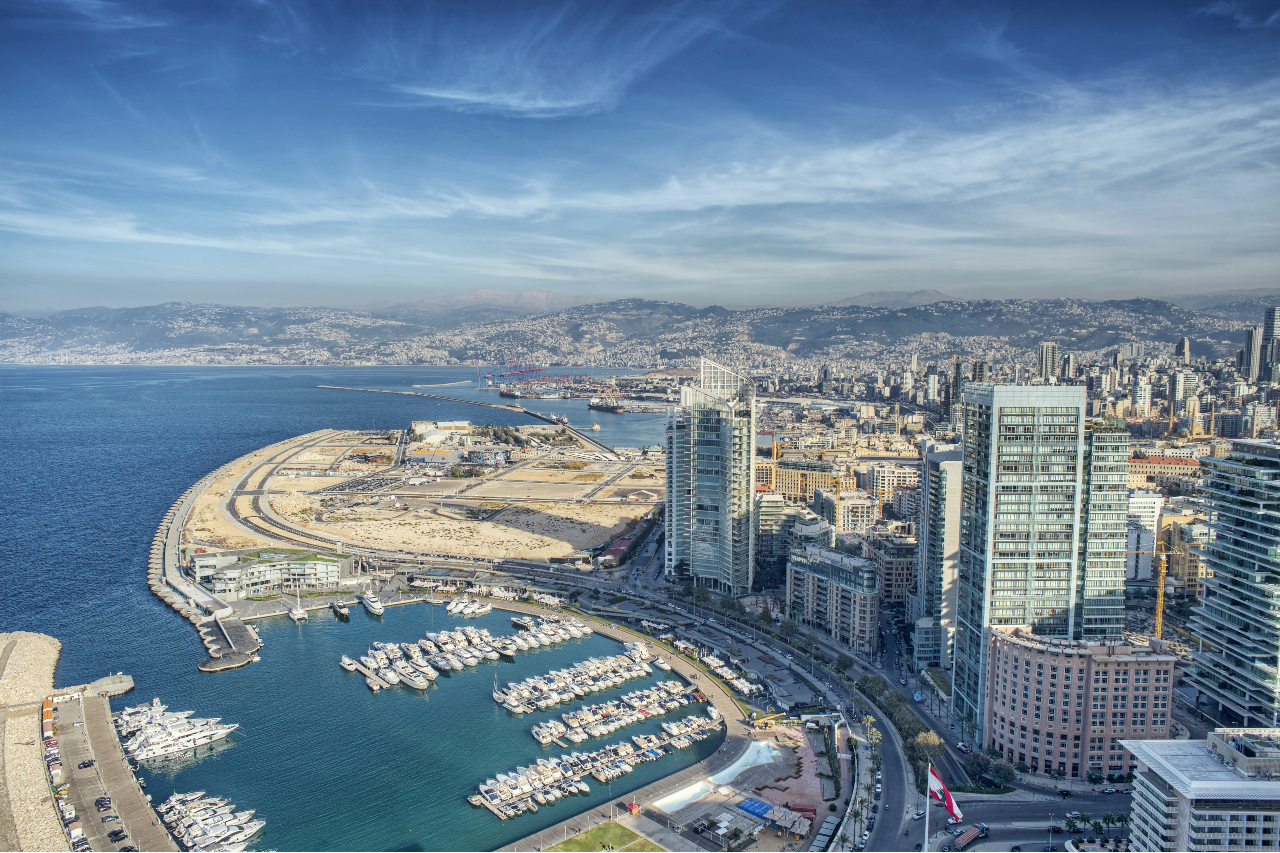
It has been quite a decade for Lebanon’s economy, dominated by its capital city, Beirut.
On the one hand, the country has not recovered to the levels of national growth witnessed in the years preceding 2011 and the start of the civil war in neighbouring Syria. On the other hand, Lebanon’s integral banking system, with its double-digit interest rates, continued to pull in overseas funds and service the country’s enormous public debt.

Meanwhile, foreign direct investment (FDI) remained fairly robust, all things considered, and Lebanon’s highly dollarised economy maintained its decades-old foreign exchange rate and inflow of US dollars – not least through a huge amount of remittances.
The perfect storm hits Beirut
The manifold crises of the past two years, however, have brought any positive development to a bitter end. Lebanon now faces its biggest economic and political crisis since the civil war of 1975–1990. Real GDP growth contracted by a huge 20.3% in 2020, far above the global average, according to the World Bank.
The ongoing collapse began in 2019, as it became clear that the country’s banking system (with its suspiciously high interest rates) was engaged in some form of Ponzi scheme. Remittances and US dollar deposits dried up.
Since then, Lebanon’s economy has spiralled out of control, leading to mass protests and ongoing political paralysis in what was an already fragile country. This situation deteriorated further still last year, under the weight of Covid-19 and the chemical explosion in August 2020 that left hundreds dead, thousands injured and 300,000 homeless across Beirut.
In short, Beirut and Lebanon are on the brink. The country's currency remains in Venezuela-like freefall, plunging more Lebanese people into poverty and igniting new waves of protest. Public services are at breaking point. The healthcare crisis aside, Lebanon may very soon run out of state-provided electricity.
The story of foreign investment in Beirut
Before Lebanon’s economic collapse, FDI to the capital and country was flowing, albeit modestly.
However, these were by no means the glory days of the 2000s. Since 2011, FDI to Lebanon plateaued, averaging about $2.4bn annually over the past decade, according to data from the UN Conference on Trade and Development (UNCTAD) World Investment Report. This decline was caused, in the main, by a significant decrease in investment from one of Lebanon’s key sources of capital, the Gulf Cooperation Council (GCC) countries, due to the geopolitics of the Syrian Civil War.
However, considering how dependent Lebanon is on the GCC, these figures could have been much worse. Despite the underlying political unrest of the past decade, the Lebanese economy still managed to attract significant foreign investment. For example, even in 2019, the country saw the sixth-highest amount of FDI capital out of all countries in western Asia, following behind Israel, Saudi Arabia, Turkey, the United Arab Emirates and Oman, according to data from UNCTAD.
The main foreign investors in Lebanon come from France, the US, the UAE, Germany, the UK, the Netherlands, Jordan and Egypt, and investment has been mainly oriented towards real estate, financial services and tourism (the majority of which is based in or around Beirut), according to Lebanon’s investment promotion agency, IDAL.
However, much like Lebanon’s reliance on remittances, FDI to the country is very often led by the huge Lebanese diaspora (which is larger than the national population of 6.8 million). For example, in 2018, a whopping 50% of all FDI to the country was in real estate acquisitions from the Lebanese diaspora. Another 29% of that year’s investment went to real estate, testimony to the country’s huge lack of diversification – a massive waste of the country’s highly educated, tech-savvy and English/French-speaking population. Similarly, some 95% of all FDI to the country was in the form of M&A, meaning very little greenfield FDI, the most productive and job-creating form of foreign investment.
The impact of the crisis on investors
Even before Covid struck, foreign investment to Lebanon was being undermined by the economic and political crisis. The pandemic has only amplified and sealed its fate.
Global FDI flows decreased by 42% in 2020, according to UNCTAD, and while data on Lebanon has not been released, it would not be unreasonable to expect that flows have been devastated.
Ironically, Lebanon’s overreliance on real estate might be a saving grace for the FDI scene. In light of the country’s severe US dollar drought, houses are being sold at a major discount to those who can pay in cash (in dollars). As global travel begins to pick up again this year, the Lebanese diaspora could go on a real estate spending spree.
However, this may be short lived since new construction projects in Beirut remain largely on halt (due to the pandemic and the inflated price of goods). Moreover, domestic demand for real estate has shot up, as many local Lebanese look to pour their money into tangible goods, not collapsing banks.
Foreign investment to Lebanon is very resilient, in large part since it comes mainly from the diaspora, but the crises of the past two years were insurmountable. Remittances to the country did not fall as much as expected last year, so there is hope that the diaspora will also come to the rescue of the country’s much-needed FDI flows.
This article originally appeared on Investment Monitor.






